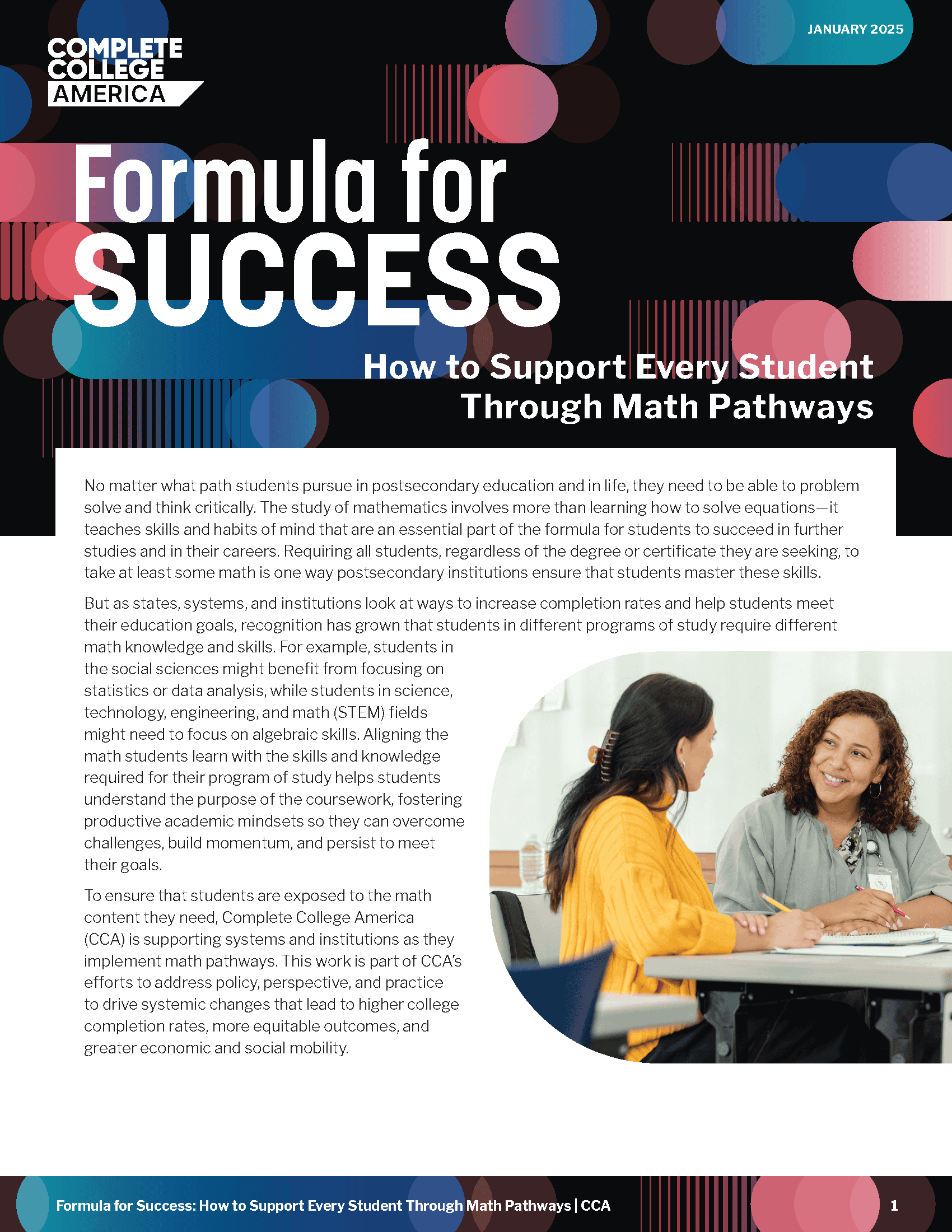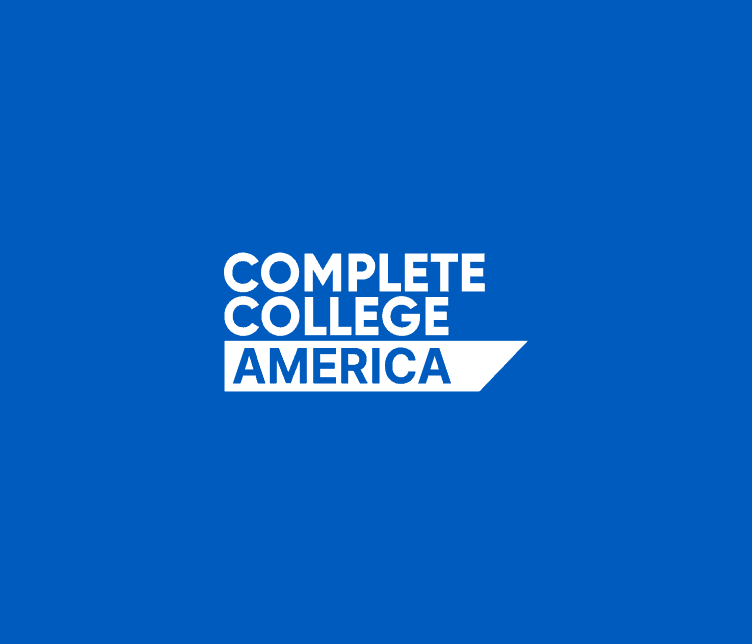A Formula for Student Success
Math pathways provide students with relevant, rigorous mathematics courses that develop quantitative reasoning skills most applicable to their chosen fields while implementing co-requisite models to expedite entry into college-level math.
High Failure Rates
College algebra serves as gatekeeper course with high failure and withdrawal rates
Misaligned Content
Traditional algebra-focused sequences don’t match many students’ actual quantitative needs
Completion Barriers
Multiple developmental math requirements delay progress and increase dropout likelihood

Proof Points
Multiple math pathways provide students with relevant mathematical content while dramatically improving completion rates and reducing time to degree.
- Math Pathways students are 8 percentage points more likely to pass developmental math
- 64% of Quantway students successfully complete developmental math in one term vs 37% in traditional sequences
- Students in statistics pathways significantly outperform those in traditional algebra sequences
- Math pathway participants show higher graduation rates and improved performance in other disciplines
El Paso Community College participated in rigorous evaluation showing Math pathways students passed college-level math at higher rates than traditional courses. After three semesters, 25% of these students passed college-level math compared with 17% in traditional courses, while 56% passed developmental math vs 48% traditionally.

El Paso Community College
El Paso, TX
Benefits
Math pathways reduce barriers to student success while providing relevant mathematical preparation that connects to students’ academic and career goals, leading to improved completion rates and student satisfaction.
Higher Success Rates
Dramatically improved gateway math completion rates within one year
Relevant Learning
Mathematical content aligned with students’ actual program needs
Faster Progress
Reduced time spent in developmental sequences accelerates degree completion
Related News
-
Learn More: CCA Outlines Math Pathways 2.0 to Ensure Student Success in STEM Fields — in ‘Formula for Success ’
CCA Outlines Math Pathways 2.0 to Ensure Student Success in STEM Fields — in ‘Formula for Success ’
Drawing from extensive work with institutions nationwide, ‘Formula for Success’ offers a comprehensive framework for implementing math pathways 2.0 and transforming mathematics education to support student success and advance equity goals.
Related Resources
-
Learn More: The College Student Success Game
The College Student Success Game
Back to CCA Games Videos, Resources, and Downloads Take on the role of a student […]
-
Learn More: Games for College Completion
Games for College Completion
Step into the shoes of a student entering college. What obstacles will you encounter? What […]
-
Learn More: Formula for Success
Formula for Success
Formula for Success outlines the next phase of math pathways work, math pathways 2.0, including revising policies and structures to ensure that all students, particularly those from groups who have been historically excluded, have access to all programs of study and the aligned math pathways.
Explore Our Work
We are shifting policy at the state and federal level, changing perspectives among educators and administrators, and implementing proven strategies across hundreds of campuses.





